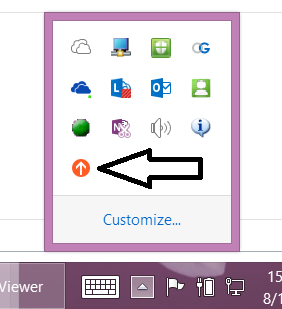Symptoms
When you use Microsoft Word 2016 Co-authoring feature in an on-premises instance of Microsoft SharePoint 2013, you receive one of the following error messages:
-
FILE IN USE This file is locked for editing by another user.
-
UPLOAD FAILED This file is locked for editing by <user>.
-
Upload Failed: Locked by another userYour changes were saved but could not be uploaded because this file is locked for editing by <user>. You will be notified when this file becomes available. Click resolve for options.
Note This message is displayed in the Backstage area.
Resolution
Important This section, method, or task contains steps that tell you how to modify the registry. However, serious problems might occur if you modify the registry incorrectly. Therefore, make sure that you follow these steps carefully. For added protection, back up the registry before you modify it. Then, you can restore the registry if a problem occurs. For more information about how to back up and restore the registry, click the following article number to view the article in the Microsoft Knowledge Base:
322756 How to back up and restore the registry in WindowsTo prevent Word 2016 from locking files that are stored on SharePoint 2013, add the EnableRealtimeChannel registry key.Note This key disables the real-time Co-authoring feature in Word 2016. This feature is available only for processing documents that are stored in SharePoint Online and OneDrive. Real-time Co-authoring is not available in SharePoint 2013 or SharePoint 2010.Add the following registry key, and then restart Word:Subkey:HKEY_CURRENT_USER\Software\Microsoft\Office\16.0\Common\FileIOKey:"EnableRealtimeChannel"=dword:00000000
More Information
Files that are stored in SharePoint 2013 and that were opened by Word 2016 before the registry fix in the "Resolution" section is applied may continue to be locked by other users even after the key is applied. This is because of document information that has been stored locally.If files continue to be locked after you apply the registry fix, you may have to rename or delete the OfficeFilecache folder to reset the sync state of these documents on your computer.Important This procedure will cause you to lose all local changes. Therefore, we recommend that you save a local copy of all pending files before you perform these steps.
-
Check for pending files. To do this, click the Office Upload Center icon in the notification area of the Task Bar, as shown in the following screen shot.
-
Wipe the entire Office file cache. To do this, follow these steps:
-
Close all Office programs.
-
In the notification area, right-click the OneDrive icon, and then click Exit.
-
Press Ctrl+Alt+Del to start Task Manager.
-
On the Processes tab, select all running processes that have any of the following image names, and then click End Process:
-
MsoSync
-
CsiSyncClient
-
MsoUC
-
Groove
-
Lync
-
OneDrive
-
-
In Windows Explorer, locate the following folder:
%SystemDrive%\Users\%UserName%\AppData\Local\Microsoft\Office\16.0\OfficeFileCache
-
Rename the OfficeCacheFolder folder. For example, rename it as OfficeCacheFolder_old. Note By renaming the folder, you preserve document data. However, you can also delete the folder to recover disk space if the folder is extremely large. Both methods reset the document sync state.
-
Restart OneDrive and other Office programs.
-
Status
This problem was fixed in with this update October 13, 2015, update for Office 2016 (KB2920679)














